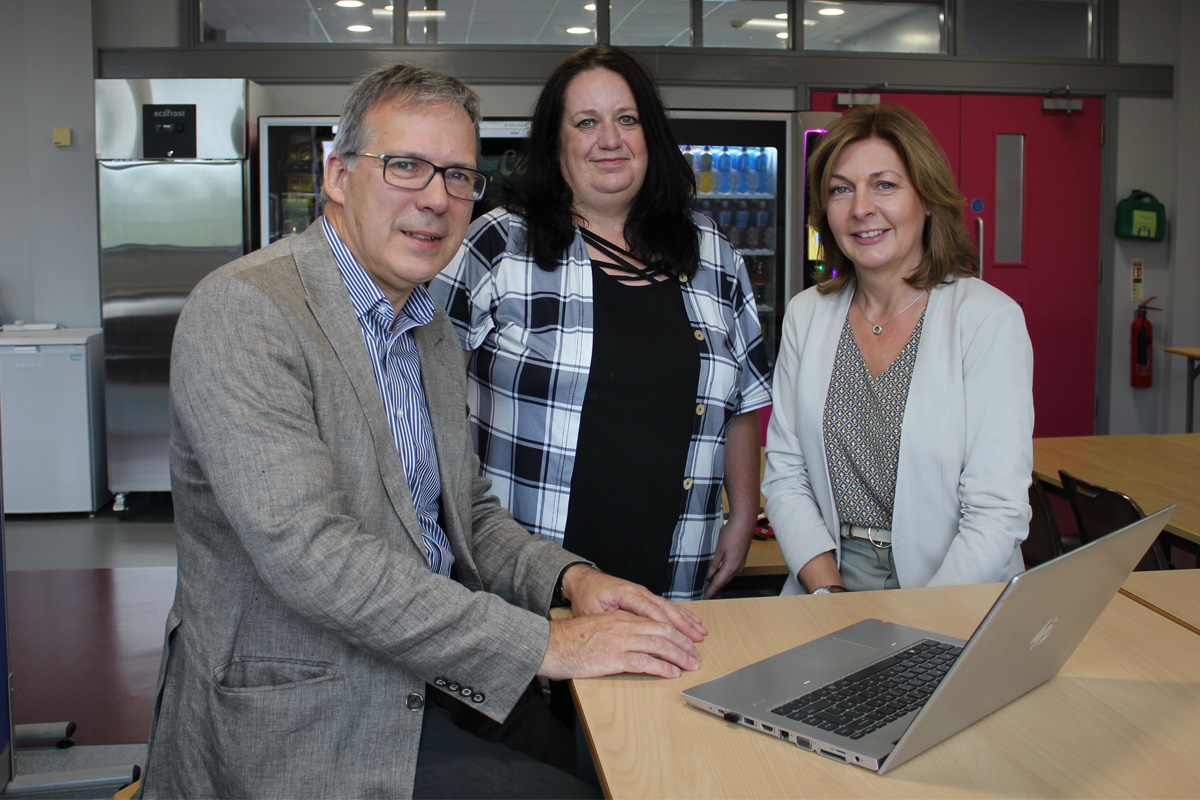Are educational institutions truly harnessing the power of technology?

The integration of technology in education is no longer a luxury but a fundamental right. High-quality, technology-driven education holds the potential to transform lives and foster social mobility, yet technology usage remains vastly unequal worldwide, potentially causing further disparity within education.
Elizabeth Ellis, Head of School of Digital Education at Arden University, discusses the impact that a technology-inclusive approach to education could have in bridging the gap in access to high-quality learning experiences.
We already know the advantages that digital education possesses. It can allow those who have different learning needs and requirements to still progress with their education, it can expose students to industries they may not be able to gain work experience with prior to specialising, and it can offer personalised and flexible learning opportunities. But importantly, technology could close the gaps in education across the world, as well as offer students the ability to gain a more global perspective within their industry, while improving digital literacy on a global scale – a concern that has been growing over the past decade.
But the use of technology in educational institutions differs greatly among establishments and regions. While some institutions make good use of technology to improve teaching, learning and general administrative processes, others may be unable to do so – often due to factors such as lack of resources, money or the time to adopt new processes. Other places – such as longstanding universities that have been built on tradition – can be resistant to change and may have a lack of expertise when it comes to being digital-first.
Digital education does help
EdTech has the ability to democratise education and personalise learning, releasing students from the school-based systems that can be considered as constraining – especially for those with different learning abilities and needs. At the moment, the reality is that many educational institutions are using technology to implement stronger levels of automation and homogenise the student experience.
But research indicates that students’ learning outcomes improve when gaining knowledge assisted by technology. One of the most significant benefits of EdTech is the increased engagement and motivation it can provide to students. This is partially due to technology promoting student-centred learning practices, where the focus of instruction shifts from the teacher to the student. This allows students to develop autonomy and independence as they become responsible for their own learning path.
On top of this, research has shown that students value a personalised and collaborative relationship with their university, which gives them confidence that their educational interests are taken into account. Technology can help here to ensure student needs are met on a wider scale. So just like flexible working is becoming more and more popular, technology can allow for ‘flexible learning’. This widens access to education, especially for those who may not be able to physically attend university, for example.
The global barriers
There remain to be many barriers when it comes to digital education. The Department for Education in the UK released its own strategy for reaching the potential of technology in education, stating that they “recognise that teachers, lecturers and education leaders often face a range of barriers to capitalising on the opportunities presented by technology.”
But challenges extend further than the UK. In fact, a UNESCO report argued that “unprecedented” dependence on technology due to the pandemic, which intended to ensure that children could continue their schooling, had worsened disparities and caused learning loss for hundreds of millions of students around the world, including in Kenya, Brazil, Britain and the United States.
There are concerns that the move to remote education led to inequalities in access to learning, resulting in digital inequality, with already disadvantaged children being most affected. The digital divide has various dimensions: as well as access to devices and internet, digital skills are important, as are external factors, such as parental support, teacher skills and learning environment. The pandemic most likely didn’t help. It resulted in many schools and universities rushing to embrace technology to keep things ticking along as lockdowns were announced, as opposed to thinking about how it could enhance education and the potential barriers some students may face along the way.
When education at school level is disrupted, it creates further roadblocks for underrepresented groups, creating an even bigger disparity at university. And, again, if technology isn’t appropriately implemented at universities, we are left with young professionals without the digital and interpersonal soft skills they need to progress in their careers post-graduation.
As Michael Trucano, an EdTech specialist at the World Bank, once said: “If you dump hardware in schools, and expect something magical to happen as a result—it won’t.” Instead, a stronger strategy is needed to make sure it enhances education, which then, in turn, can allow for equality in education across the globe.
How educational institutions can utilise the power of tech
One immediate solution to bridge the digital divide is to offer subsidies, free internet access and bursaries or interest-free loans to students to purchase computers and other digital devices. But there is also an onus on schools (and the government) to ensure that students have access to digital devices at school if they do not have them at home. This is to make sure that students are picking up the digital skills and confidence that they will inevitably need later in life. But if this step has been missed, universities must pick up the slack – they should not be assuming all students are tech-ready, and should be offering support and bitesize courses to ensure students are digitally confident.
To start, educational institutions – schools and universities, alike – should reinvent their approaches to learning, inquiry, workflow and administration by integrating technology. Essentially, the first step should be to focus on increasing their teaching ‘effectiveness’ to help all participants – students and teachers – communicate and collaborate more effectively. This could be implementing technology that helps to flag student attendance and who may need more guidance, or technology that allows lecturers to plan lessons more effectively, so they can focus on the teaching and the delivery of lesson materials.
The key here is teachers and academics being empowered and skilled up to critically use technology to solve the issues we are having within education that will eventually lead to opening access to education, instead of universities replacing processes with technology in hopes that it will offer a better standard of learning.
This extends to taking a step back and ensuring that courses are truly inclusive when technology is integrated. For instance, more people have access to a smartphone than a laptop, so looking at applicable apps is essential – as well as creating course information in a mobile-friendly way. It also means giving students the information they need to use the best device for a given learning situation. For those with an insecure internet connection, institutions also need to find a way to allow access to resources that can be downloaded or accessed for offline. This allows for more consistency in education for those studying in areas in the world where internet connection isn’t as strong.
When education is reimagined and structured around technology, as opposed to forcing technology for technology’s sake, educational institutions can then look towards more innovative technology that will boost student experience. This may include using fresh, cutting-edge digital experiences – such as AR experiences to expose students to the industry, or using technology to provide more interactive solutions to simple problems, promoting flexible learning, which is an ideal way to open up access to education with the help of technology.
People assume digital learning just involves students attending online lectures and webinars, or listening to podcasts or engaging with blogs. However, over the past decade, technology has rapidly developed to not only offer a more engaging learning experience but also offer a more personalised journey – especially for those with different needs and learning abilities. As a result, we can look towards opening up access to education, instead of hindering students’ learning experiences.
Of course, some of the aforementioned barriers will remain. Schools and universities play an integral role in ensuring that technology is pedagogy-led, teacher-led and student-centric – which is why we need to use technology to solve real problems, rather than take over and, in turn, create more issues than we had to begin with.
By Elizabeth Ellis, Head of School of Digital Education at Arden University
FE News on the go
Welcome to FE News on the Go, the podcast that delivers exclusive articles from the world of further education straight to your ears.
We are experimenting with Artificial Intelligence to make our exclusive articles even more accessible while also automating the process for our team of project managers.
In each episode, our thought leaders and sector influencers will delve into the most pressing issues facing the FE.











Responses